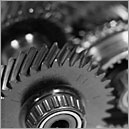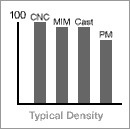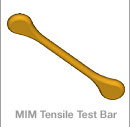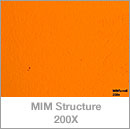

When designing metal components it is important to understand how MIM compares with more traditional forming technologies.
CNC Machining
Both metal injection molding and CNC machining can
be used to create complex, precise component shapes. With machining, each
part is individually cut, whereas with MIM only the injection tool is. This
is particularly significant with difficult to machine materials such as tungsten
carbide, titanium or tungsten-copper.
MIM is slightly less precise than machining so MIMforms combines molding with limited machining to deliver economical, high-precision parts. Metal injection molding also offers both volume production and shorter lead-times compared to CNC once tooling is created. This enables a faster response to changes in end-user demand.
Press and Sinter (PM)
Traditional powder metallurgy or PM is an economical
solution for simple shapes. High strength and hardness are normal attributes
of MIM, machined and cast components. PM suffers in these categories due to
its inherently lower density.
Die Casting
Investment casting is less precise than either MIM
or machining and not usually the optimal choice for small, complex geometries.
 |
 |
 |